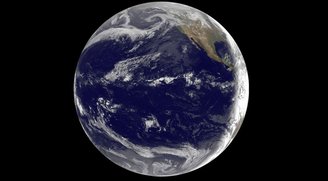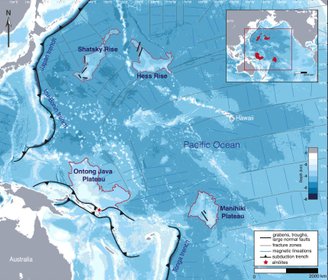Pacific tectonic plates have major faults and are pulling apart, study says

In a study published in the scientific journal Geophysical Research Letters, a team of researchers from the University of Toronto, Canada, detected large underwater faults in the tectonic plates located in the Pacific Ocean and found that they may be separating.
The article describes that some of these faults are hundreds of kilometers long and thousands of meters deep; they are the result of forces within the plates that pull them westward.
According to the professor in the Earth Sciences department at the Canadian university, Russell Pysklywec, the article can help with a better understanding of the topic by refining the theory of plate tectonics and showing that they are not as rigid as we imagined. The researchers point out that faults have been detected on extensive sub-oceanic plateaus that originated millions of years ago.
Unfortunately, it’s not just the Pacific Ocean plates that are experiencing major faulting. Recently, an international team of scientists presented new information during the American Geophysical Union Conference suggesting that the Indian tectonic plate is splitting in two beneath Tibet.
The study suggests that, in the past, volcanism has occurred in this region as a result of this type of fault in the tectonic plates.Source: NOAA / NASA / GOES Project
“We knew that geological deformations, like faults, happen inside continental plates, far from plate boundaries. But we didn’t know that the same thing was happening to oceanic plates. It was thought that because suboceanic plateaus are thicker, they must be stronger. But our models and seismic data show that it is actually the opposite: plateaus are weaker,” said one of the authors, Erkan Gün, an associate at the University of Toronto.
Tectonic plates
The researchers suggest the effect works like a tablecloth being pulled across a table; like this, sub-oceanic plateaus are more likely to pull apart, like a torn fabric. It is important to clarify that this is not an event that will cause the end of the world.
A statement explains that the Pacific tectonic plate has shifted westward along the subduction zones between Japan, New Zealand and Australia. Source: University of Toronto / Geophysical Research Letters
The discovery was made using data entered into supercomputer models. In total, four plateaus in the western Pacific Ocean, known as Ontong Java, Shatsky, Hess and Manihiki, were investigated. Although scientists believe it is necessary to study the topic further to understand the situation, they are hopeful that the new article will encourage future studies.
“But the theory is not set in stone and we are still discovering new things. We now know that this fault damage is destroying the center of an oceanic plate — and this may be linked to seismic activity and volcanism. A new discovery like this overturns what we understand and teach about the active Earth. And it shows that there are still radical mysteries about even the great workings of our evolving planet,” Pysklywec said.
Did you like the content? So, always stay up to date with more studies on plate tectonics here at TecMundo. If you wish, take the opportunity to understand how plate tectonics drives the growth of marine biodiversity.






